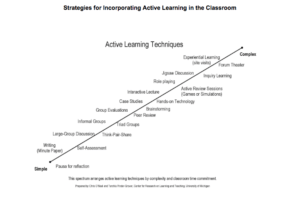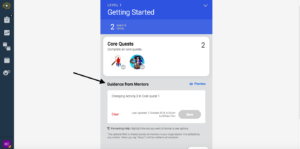Customizing the Classroom: Differentiation in Quest Forward Learning
When we receive feedback from teachers, we often hear that while Quest Forward Learning ticks all the right boxes it’s still unclear how it can meet the needs of all students. In order to discuss this in greater detail, we have to understand what “differentiated learning” is—and what it is not.
Here are common misconceptions of differentiated learning. It is NOT:
- Made up of stagnant groups that are based on data collected at the beginning of the year/program.
- Teaching only the lower-level students and letting the higher-level students teach themselves.
- Giving higher-level students more work simply because they can handle it.
Differentiated learning IS:
- Flexible groupings of students, based on skills, interests, readiness, or choice.
- Purposeful, flexible groupings of students, so as to keep the learning experience in mind.
- Tailored instruction that meets the needs of students at all levels.
It is important to recognize that Quest Forward Learning is not a one-size-fits-all program, nor does it follow a one-and-done model. It is a continuum of experiences that allows students to develop the mindset, habits, and skills to thrive in, and beyond, school. With these definitions and goals in mind, students bring their own curiosities, interests, learning needs, and knowledge base to the classroom. Not every student who embarks upon a quest will learn the same thing or have the same experience, however. Quests are designed to meet students where they are are and allow students to progress towards their ultimate goals.
Student goals come with multiple iterations, but they should be differentiated based on the needs and levels of your particular students. Here are some best practices for differentiating and customizing quests, no matter your learning space:
- Set flexible but firm pacing. Not every student will be able to speed through quests. It is important to give them the ability to progress at their own pace, while making their own choices. Having a framework for pacing will give students and mentors some initial expectations, but with flexibility as appropriate. Offer support along the way for those students who may struggle with a quest or topic, and allow those who are ready to move forward to do so. Remember, at each step of the process, to include time for reflection and critical thinking, and enough challenge to accomplish goals.

- Incorporate active learning techniques. Active learning is an instructive approach in which students are involved in the learning process. This is especially relevant when meeting students’ diverse learning needs, as it allows them to focus on learning, rather than content consumption. See examples of active learning techniques, below.
- Use formative assessment (skills checks, habit reviews, effort ratings, check-ins) to inform instruction. There are many ways to check for understanding, but mentors need to understand the why and the end goal of assessment (i.e., What are we learning today?). With formative skills checks, habit reviews, daily effort ratings, and ongoing check-ins, mentors can plan the right types of instructional activities to drive differentiation. This relevant instruction will inevitably increase student engagement, as well.
- Use “Guidance from Mentors” to supplement content and resources. In the Quest! platform, mentors provide supplemental resources, such as links to helpful guides, articles, and videos. Students who are struggling can utilize these links when they need additional help, while advanced students can utilize these resources to delve even deeper into a topic that interests them.
 It is not easy to create a flexible, differentiated learning experience. Therefore, mentors are instrumental in helping students set and achieve their learning goals. By employing these differentiation tips and best practices when designing and planning quest-based courses, all students will receive the instruction that best meets their individual needs.
It is not easy to create a flexible, differentiated learning experience. Therefore, mentors are instrumental in helping students set and achieve their learning goals. By employing these differentiation tips and best practices when designing and planning quest-based courses, all students will receive the instruction that best meets their individual needs.
